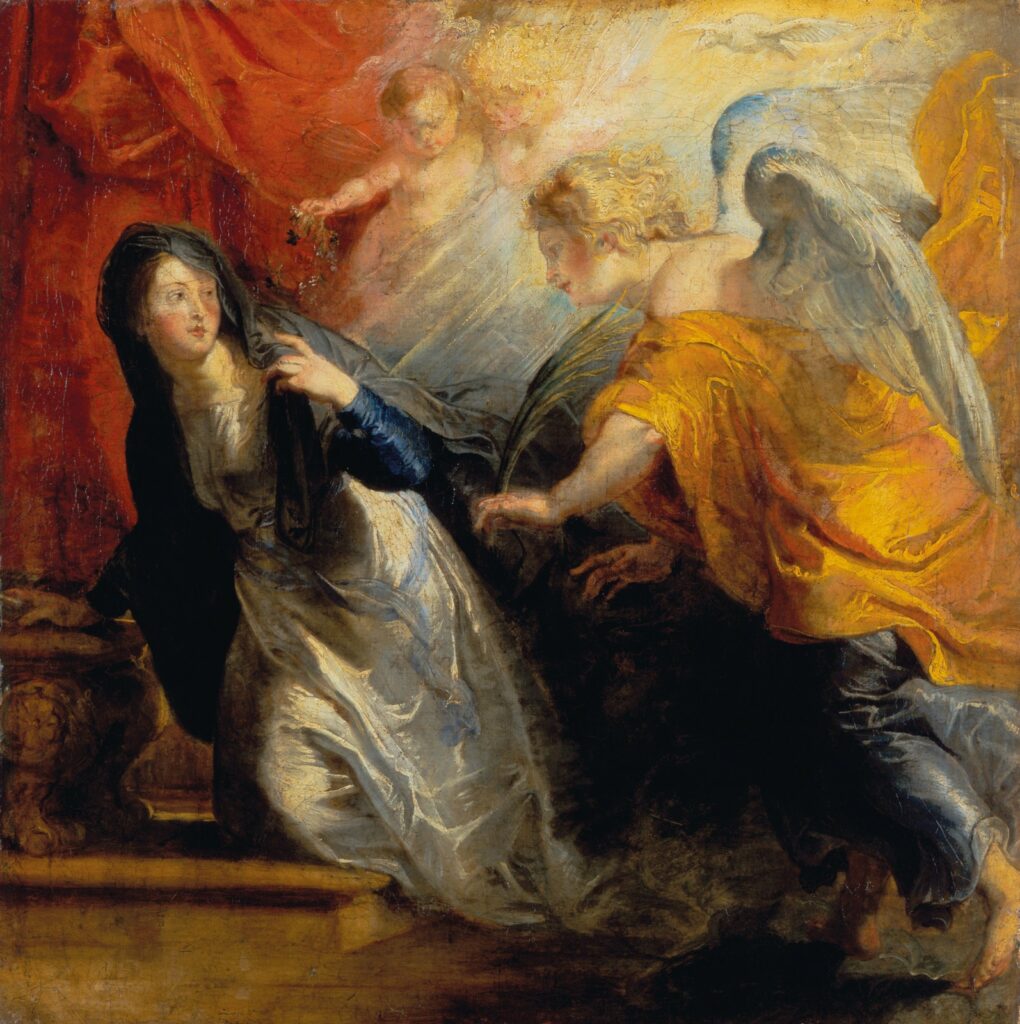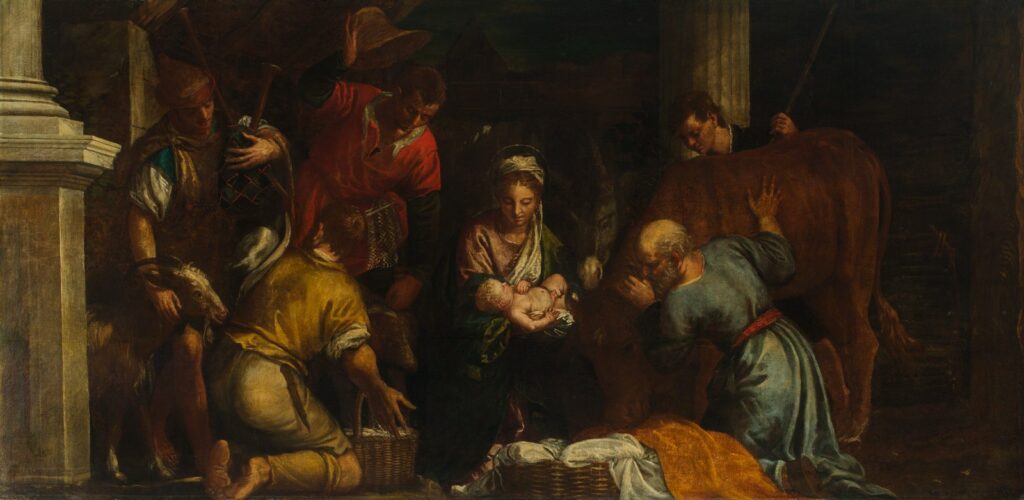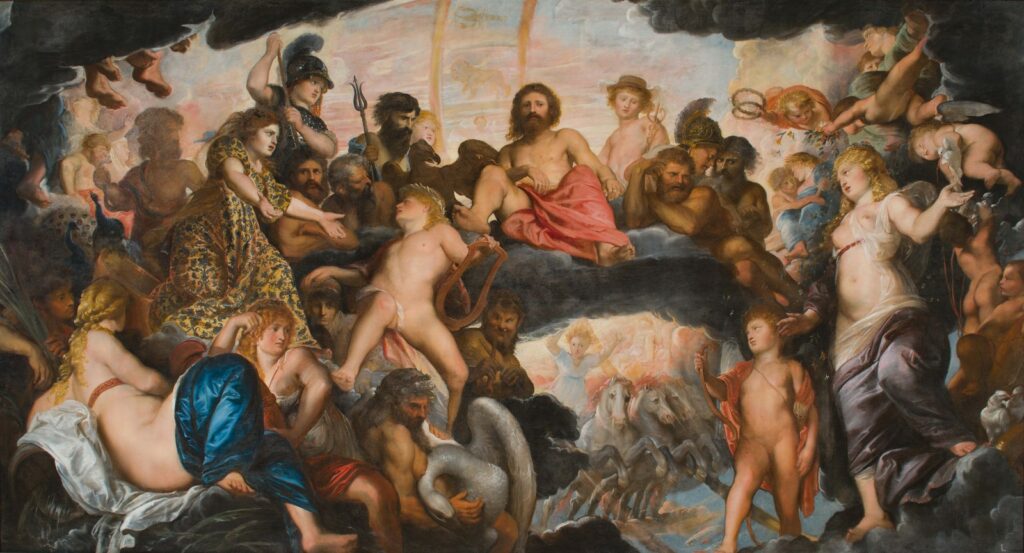Photo: archive of the Prague Castle administration
The origins of the Picture Gallery of Prague Castle date back to the turn of the 16th and 17th centuries, to the reign of the Holy Roman Emperor, King of Bohemia and Archduke Rudolf II of Austria. From 1583, when Rudolf II asked the Czech Estates for a contribution to the improvement of Prague Castle, not only were paintings and sculptures purchased all over Europe and works of art commissioned for the collection, but also several rooms were added for their display. Space was chosen above the previously built Stables between today's Second Courtyard and the Deer Moat, and also in the building separating today's Second and Third Courtyards. The largest of the halls, today called the Spanish Hall, was completed in 1606. In 1612, the year of Rudolf II's death, the entire collection contained around 3,000 works.
During the following Thirty Years' War, some of the paintings were taken to Vienna. A substantial part of them fell prey to a targeted raid by Swedish troops, ordered by Queen Christina at the instigation of Jan Amos Komenský, who wanted to protect the treasures of the Czech kingdom from the Catholic Habsburgs. The Swedes had a specific description of the collection in the form of an imperial inventory from 1647. More than 500 paintings were thus transferred to the Swedish collections, where most of them remain to this day. In 1649 a new inventory was taken at Prague Castle, which included only two paintings and many empty frames.

As Prague Castle was to continue to serve the Habsburgs as a representative residence, part of the paintings were transported back from Vienna and other paintings were purchased. By 1656 at the latest, the restored picture gallery contained about 600 paintings, and although it was much smaller at that time, its artistic value did not lag behind either the original collection or the Viennese collections. During the 18th century, several paintings were taken to Vienna and others to Prague, but the Picture Gallery as such was preserved until the reconstruction of Prague Castle under Maria Theresa. The Picture Gallery as an independent space was closed in 1762. The paintings no longer served as a separate collection in a separate space, but only as decoration for the royal apartments. A large collection of paintings was sold to Dresden, other "surplus" paintings were sold at auction. The original rooms intended for the presentation of the Picture Gallery of Prague Castle have never been used for this purpose since the Theresian reconstruction and still serve as representative rooms.
After 1918, the newly established Czechoslovak Republic demanded the return of the paintings from Austria. The Austrian side acknowledged this claim, but offered only inferior paintings for return, so no agreement was reached. Subsequently, the premises of Prague Castle were redecorated with paintings purchased from the so-called Masaryk Fund of National Culture and part of the old collection was lent to the National Gallery. There was no separate picture gallery at the Castle. In 1961, another part of the paintings with then "inappropriate" religious themes was handed over to the State Institute for Heritage Protection. This completed the fragmentation and reduction of the original collections.

The change of atmosphere in the Czechoslovakia in the 1960s, however, contributed positively to the fact that, after a long effort, the original stables under the Spanish Hall were rebuilt in 1964-1965 and a new Picture Gallery of Prague Castle was built there. Under the leadership of Professor Jaromír Neumann, by decision of the then President Antonín Novotný, the original intention of Emperor Rudolf II was restored and the exhibition, which is only a fraction of the original collections in terms of numbers, but is significant in the quality of the individual works of art, returned to Prague Castle. For the first time, it became open to the public without restrictions and, moreover, it was placed in the context of other European galleries, and some of its unique works are still on loan for exhibitions in this country and abroad.
After 1989, a new face of Prague Castle is being sought, many spaces that were previously closed are being opened to visitors, many things are being reconstructed and changed. The desire to give the Castle a newer, modern look also led to the decision to transform the Picture Gallery of Prague Castle. In 1995-1998, all the rooms were substantially renovated technically to modern safety and air-conditioning standards. Furthermore, according to the project of Bořek Šípek, who was invited to the Castle by President Václav Havel, modifications were made to the exhibition spaces, a new entrance design and furnishing of the interiors with seating furniture. It was also possible to purchase several paintings from Rudolf's original collection. Only the most important pieces of historical and modern painting were selected for the permanent exhibition. In the Picture Gallery, the individual works were arranged according to their affiliation to local painting schools. Paintings by Rudolphine masters and works from the collections of Emperor Rudolf II also have their own space. The author of the latest conception of the Picture Gallery of Prague Castle is PhDr. Eliška Fučíková, who in the sixties was an assistant to Professor Neumann and looked into the research of the history of the Prague Castle collections, including the comparison of individual historical inventories and other documents that allow to explain the development of these collections from the 16th century to the present day. The collection of this new Picture Gallery received international recognition in 2001 when it was exhibited as a whole in Maastricht.

https://www.hrad.cz/cs/kultura-na-hrade/program/obrazarna-prazskeho-hradu-12444
Hrad.cz/Jana Černá



